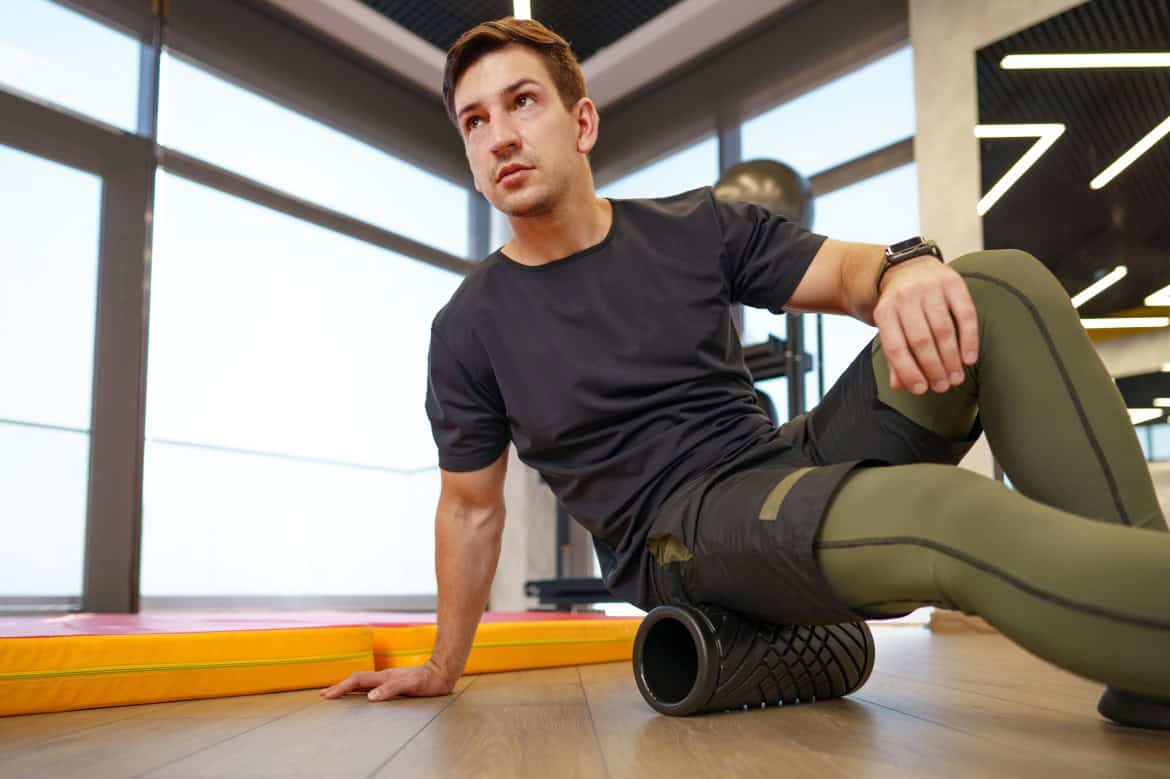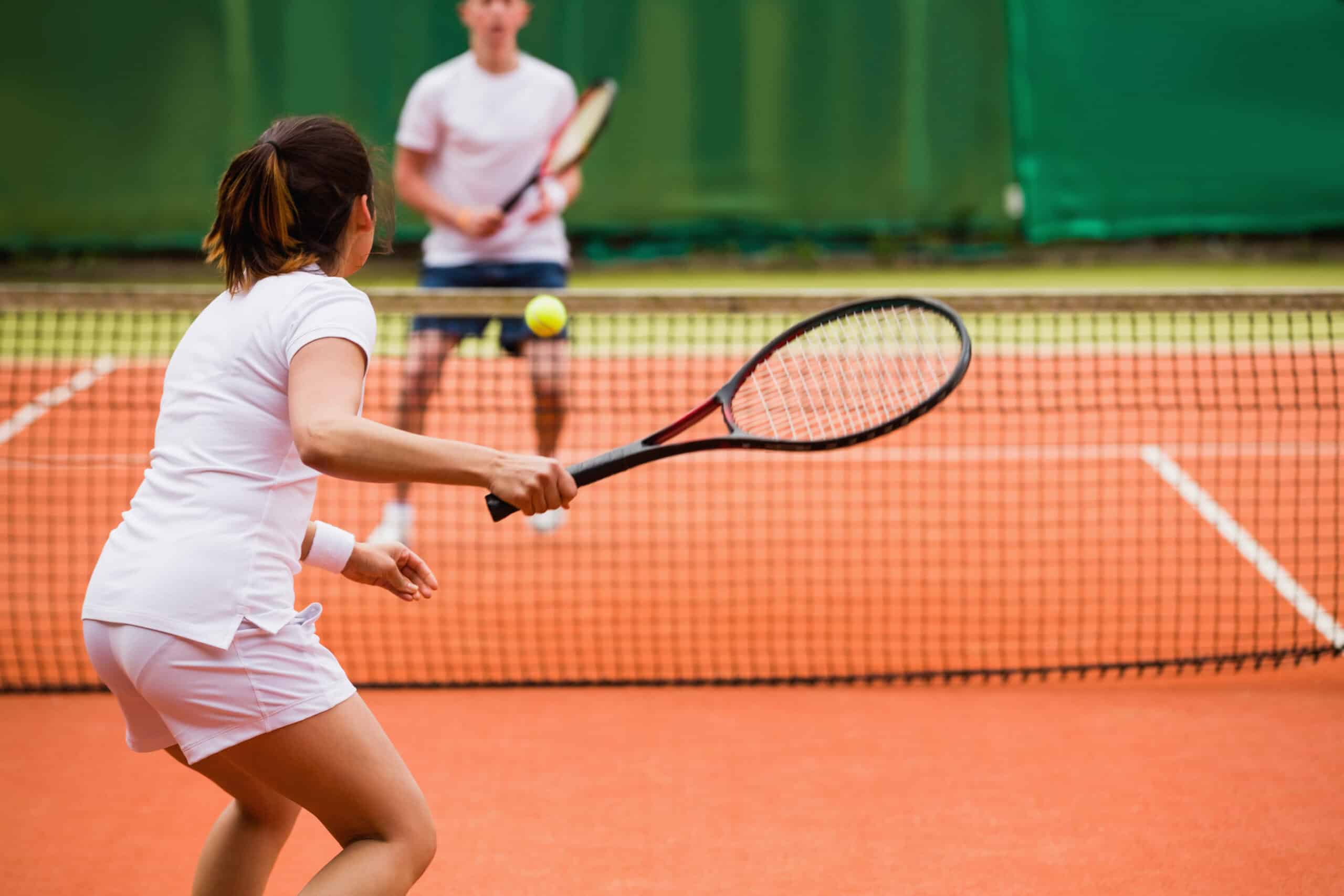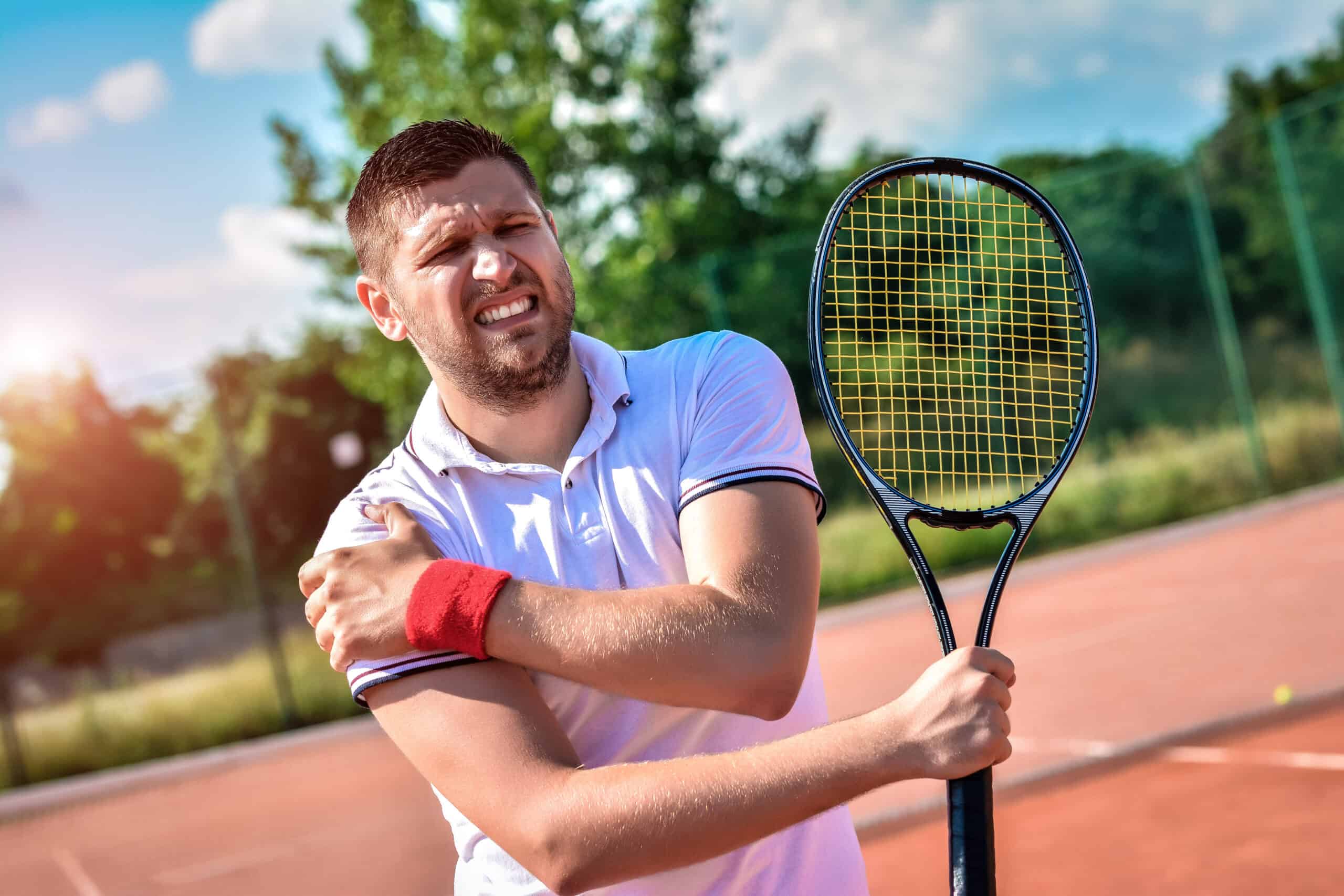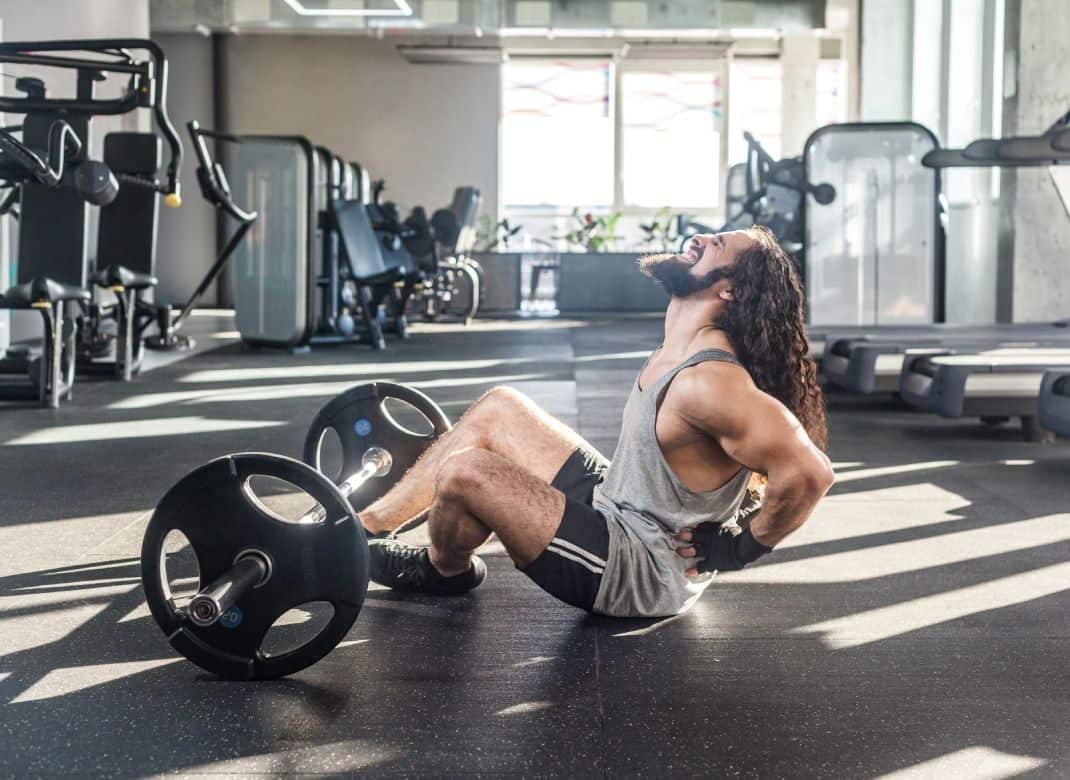Tennis physiotherapy is an essential component in addressing and preventing tennis-related injuries. This specialized field combines the expertise of physiotherapists and chiropractors to provide comprehensive care for tennis players. By integrating chiropractic manual manipulation techniques with targeted tennis physiotherapy exercises, optimal results can be achieved for those suffering from tennis injuries.

As a tennis player, physical fitness is a necessity if you want to perform your best in every game. However, the demands of the game, including swinging the racquet, running back and forth, and jumping, can leave you prone to certain injuries that can hinder your ability to play the game well. The solution? Often, it is chiropractic care tailored to tennis players. In this comprehensive guide, discover everything you need to know about tennis injuries, chiropractic care for tennis, preventive measures you can take, and how the right chiropractic approach can help you enjoy a healthier game.
Common Tennis Injuries And Why They Occur

While tennis is less likely than other sports to lead to major injuries, fractures, or brain trauma, tennis players do tend to suffer from certain injuries due to the nature of their sport. Here is a look at three of the most common, what their symptoms are, and why they may occur.
Tennis Elbow
Tennis elbow is usually caused by overuse of the tendons that extend from the forearm to the outside of the elbow (Golfer’s elbow, which can also afflict tennis players, is a similar injury affecting the tendons on the inside of the elbow). Repetitive actions such as holding the tennis racket, completing backhand shots and other tennis movements leads to inflammation of these tendons. Symptoms may include the following:
- Pain that radiates from the outside of the elbow up or down your arm
- Weakness that makes it difficult to grasp objects
- A burning sensation on your elbow
- A swollen or tender outer elbow
Rotator Cuff Injury
The act of playing tennis can also put a significant amount of stress on your rotator cuff and shoulder joint. The rotator cuff attaches your upper arm bone (the humerus) to your shoulder joint and plays a key role in helping you to lift and move your shoulder. Injury often occurs here among tennis players thanks to repetitive movements (Such as lifting the racket overhead) and due to sudden, forceful motions that can lead to tears in the rotator cuff. Symptoms of this injury may include the following:
- Shoulder pain, even when resting
- Pain when moving your arm
- Weakness in lifting or moving your arm
- Crackling in the shoulder
Knee Injuries
While the arm is most frequently involved in tennis injuries, the pivoting, jumping and running required in tennis can also lead to knee injuries. These can include everything from spraining your knee to tearing a ligament or creating inflammation in the tendon of your knee. Symptoms of a knee problem may include the following:
- Swelling or stiffness in the knee
- Tenderness
- Crunching or popping noises
- Knee weakness
- Inability to bear weight on the knee
- Limited range of motion
Additional Injuries
Tennis elbow is arguably the most well-known tennis injury, but others, including tennis leg and jumper’s knee, are actually more common reasons tennis players seek chiropractic care. In fact, most sports chiropractors who treat tennis players see more injuries to the lower extremities — foot, ankle, and knees — from hard planting on court surfaces and the continuous twisting and torquing necessitated by the sport. Some additional injuries that tennis players may experience include the following:
Chiropractic Care: A Noninvasive Approach to Tennis Injuries
Sometimes, tennis injuries are addressed with invasive procedures, such as surgery. At other times, the use of pain pills can address the discomfort associated with tennis injuries. While not invasive, this approach fails to address the root cause of the problem, while often causing issues of their own.

Regular chiropractic care reduces pain, inflammation, and soreness associated with training and play, and helps to keep muscles supple and unrestricted, improve flexibility and range of motion.
An alternative to these less-than-desirable approaches is often chiropractic care. As a holistic approach to treatment, it can be used both to heal and to prevent certain injuries incurred by tennis players. Some studies have shown chiropractic care to be effective in the treatment of these types of injuries. Consider, for example, this study of an individual who suffered from tennis elbow for two years before receiving sports medicine care that restored his function and alleviated his pain.
If chiropractic care can effectively address certain injuries caused by tennis, it may help you to avoid surgery (or ongoing pain pill usage). In fact, though not specific to tennis, some research has shown that chiropractic care reduces the need for back surgery in individuals experiencing back pain. What if you could enjoy the benefits of chiropractic care, avoid the need for invasive procedures and get back to the sport you love more quickly? Here are the primary benefits of chiropractic care for tennis players:
Pain Relief
Chiropractic care for tennis players can play a role in alleviating the pain associated with injuries such as torn rotator cuffs or tennis elbow. The right adjustments do more than simply take away pain, however. They address the musculoskeletal imbalances and misalignment that can contribute to pain and can even reduce inflammation.
For example, myofascial release may be used to alleviate tension or adhesion in the elbow, while PEMF may be used to stimulate the body’s healing processes. Or, adjustments may be made to ease the inflammation and stiffness within the elbow joint. All of these techniques can alleviate pain while addressing its cause, so that healing comes faster and relief lasts longer.
Improved Range of Motion
Being able to move fully and fluidly is essential to the successful performance of tennis. If injuries or tension limit this movement, playing the sport can become more difficult. In addition, a limited range of motion may leave you more prone to injury, as your body cannot as easily move as required during the game.
Chiropractic care can help loosen up muscles and joints and give you full use of your body. A professional chiropractor or sports medicine specialist can use a variety of techniques to help mobilize your joints and improve your flexibility. From utilizing massages to calm inflammation to incorporating adjustments to align your body, these techniques can help you in preventing or overcoming injury.
Improved Performance
As an athlete, you naturally want to perform at your peak. Instead of waiting until you are injured to seek out the restorative assistance of a sports medicine professional, you can boost your performance now by seeking their help.
For example, a chiropractor may be able to identify tennis muscle imbalances, suboptimal ways of moving, or issues with your nervous system function that make it difficult for you to excel in tennis. They can also help you develop exercise regimens that give you greater strength, improve your coordination, and expand your range of motion so you can push yourself (safely) to the peak of your game.
Preventive Care
Finally, sports medicine and chiropractic care can go beyond injury rehabilitation and stop injuries from occurring in the first place. Tennis players, for example, who want to stay healthy longer may see a chiropractor to optimize their movement, implement an exercise regimen to improve range of motion, or receive PEMF treatment to overcome soreness before it becomes a sports-inhibiting issue.
Common Chiropractic Treatments
In the context of tennis physiotherapy, chiropractic care focuses on detecting and eliminating scar tissue originating from repetitive motions and past injuries, which can restrict the movement of ligaments, tendons, and muscles. These hands-on techniques, when combined with personalized tennis physiotherapy programs, ensure a well-rounded approach towards treatment and recovery.
Chiropractors, and sports medicine professionals in particular, have many tools and techniques available to address your tennis injuries. These can be broken down into hands-on techniques and treatments and specialized approaches.
Hands-On Approaches

Chiropractic manual manipulation can be employed to detect and eliminate scar tissue originating from repetitive motions and past injuries, which restrict the movement of ligaments, tendons, and muscles. Hands-on techniques encompass various manual methods that a chiropractor utilizes to address tennis injuries. These may consist of any of the following:
- Spine and limb adjustments
- Soft tissue mobilization
- Myofascial release
- Manual therapy
Active Rehabilitation Therapies
Specialized treatments encompass chiropractic and state-of-the-art active rehabilitation therapies, which prove to be much more effective than passive rest-and-ice protocols. These treatments aim to naturally reduce pain, mitigate the dependence on NSAIDs, and minimize the necessity for steroid injections, all while being tailored to the specific needs of the patient. They include any of the following:
- Myofascial release
- Instrument-assisted soft tissue technique
- Acupuncture
- Dry needling
- Therapeutic exercises
- Ultrasound therapy
- Electrical stimulation
- Kinesiology taping
- Rehab programs
- PEMF
- And more
Limitations of Chiropractic Care For Tennis Players
Chiropractic care does have its limitations when it comes to treating tennis injuries. The biggest limitation is the fact that sports medicine specialists focus primarily on the musculoskeletal system. As a result, problems that extend beyond the muscles, joints, spine, etc. may be outside the scope of chiropractic care. At these times, your chiropractor may be able to work within a multidisciplinary team or provide referrals to specialists who can provide the appropriate treatment for your tennis injury.
In addition, while chiropractic care is noninvasive and therefore safer than more extreme approaches, such as surgery, it can have some minor side effects that you should be aware of. These may include the following:
- Temporary soreness
- Temporary fatigue
- Headaches
- Dizziness
- Numbness
The key to managing these side effects is to communicate clearly and promptly with your provider. They can usually adjust and tailor your treatment to minimize side effects and ensure that you do not suffer actual pain during your visits or while implementing your at-home exercise regimens.
How can you ensure that your chiropractic care is delivered effectively and safely? Look for a qualified, licensed and reputable chiropractor or sports medicine professional. For example, here at Dynamic Sports Medicine, we have worked with professional athletes for years, and the same approach that they trust is available to you!
Practical Tips for Preventive Care
Preventive measures should be an integral part of any tennis players’ regimen in order to minimize the risk of injuries and optimize your performance. Here are some tips that can prevent injury, improve your performance, and reduce the amount of time you spend seeking sports medicine support.
Follow warm up and cool down best practices

Warming up and cooling down is essential to prepare your muscles, joints and ligaments for performance, and to prevent stiffness and injury after playing.
For warm-up routines, dynamic stretching is often an effective approach. This strategy involves using controlled movements to target your major muscle groups in order to loosen them up for the movements and stresses of the upcoming game. Here are two examples of dynamic stretches that work your lower body and your whole body, respectively.
Straight Leg Marches
- Stand straight with arms at your sides
- Raise your left arm until it is at hip level.
- Lock your knees.
- Raise your right leg until it is even with your left arm.
- Repeat using the opposite arm and leg.
- Perform for desired number of reps.
Hand Walks
- Bend over until your hands are flat on the ground.
- Walk forward until your back is straight.
- Move your feet toward your hands – Keeping your legs straight.
- Move your hands forward again and repeat.
When cooling down, static stretches often work best to reduce muscle tension and prevent next-day soreness. While there are dozens of static stretching exercises you can adopt, here are two that commonly work well for tennis players.
Wrist Extensor Flex
- Place your left arm straight in front of you.
- Place your hand palm down.
- Use your right hand to hold your left hand.
- Gently bend your left hand down until you feel the stretch.
- Hold for 10 seconds.
- Repeat for your desired number of repetitions.
Butterfly Stretch
- Sit on the floor with the soles of your feet together.
- Move your feet closer to your hips.
- Push down into your sitting position.
- Straighten your spine.
- Tuck your chin into your chest.
- Inhale and exhale slowly, allowing yourself to straighten and relax with each breath.
- Hold for up to 2 minutes.
- Repeat desired number of times.
Use the proper equipment
The equipment you use has more of an impact on your physical health than you may realize. Here are some ways to ensure you have equipment that will support your health:
- Use a tennis racket that is the appropriate size and weight for your hand to avoid stress from a racket that is too large or heavy.
- Invest in tennis shoes that offer appropriate foot and arch support.
- Replace your equipment regularly when they become worn out.
Optimize your technique
Sometimes, tennis injuries occur because of improper movements or or poor footwork that put unnecessary strain on important joints and muscles. Working with a trained tennis coach can help you to master important techniques that can minimize injury. Use your training to focus on elements of game play such as the following:
- Body positioning
- Posture
- Footwork
- Stroke mechanics
Embrace regular chiropractic care
Because chiropractic care can help you to prevent injuries before they occur, regular check ins with a sports medicine professional are essential. Do not wait until you are in pain to seek out their assistance. Instead, make them part of your wellness routine.
As an athlete looking to maintain health and performance on the court, you should plan to see a sports medicine professional once a week (or more, if recommended). During these check ins, your chiropractor to provide you with the following:
- Musculoskeletal assessments
- Imbalances identification
- Preventive exercises
- Body alignment
- Flexibility support
- Addressing of minor issues
The key to enjoying all of the benefits of chiropractic care is to identify problems early on and make chiropractic care part of your regular routine. With a professional assisting you on a weekly or even monthly basis, you can identify problems before they take you off the court – Or prevent them from happening in the first place.
By incorporating tennis physiotherapy into the rehabilitation process, players can improve overall muscular balance, flexibility, and strength. This not only addresses the existing tennis injuries but also helps in preventing future injuries, leading to improved performance and a reduced risk of further complications. Moreover, the combination of chiropractic care and tennis physiotherapy offers a holistic approach to recovery for athletes, enabling them to swiftly return to their optimal playing condition.
Chiropractic care is an excellent option for any tennis player looking to maximize performance, minimize injuries and stay on the court. At Dynamic Sports Medicine, we offer you the same care trusted by top athletes. That means that you receive expert care, from preventive appointments to injury rehabilitation. And, with a wide range of services that includes adjustments, PEMF and more, we have the tools to customize your treatment to your needs. Contact us today to learn more!








































